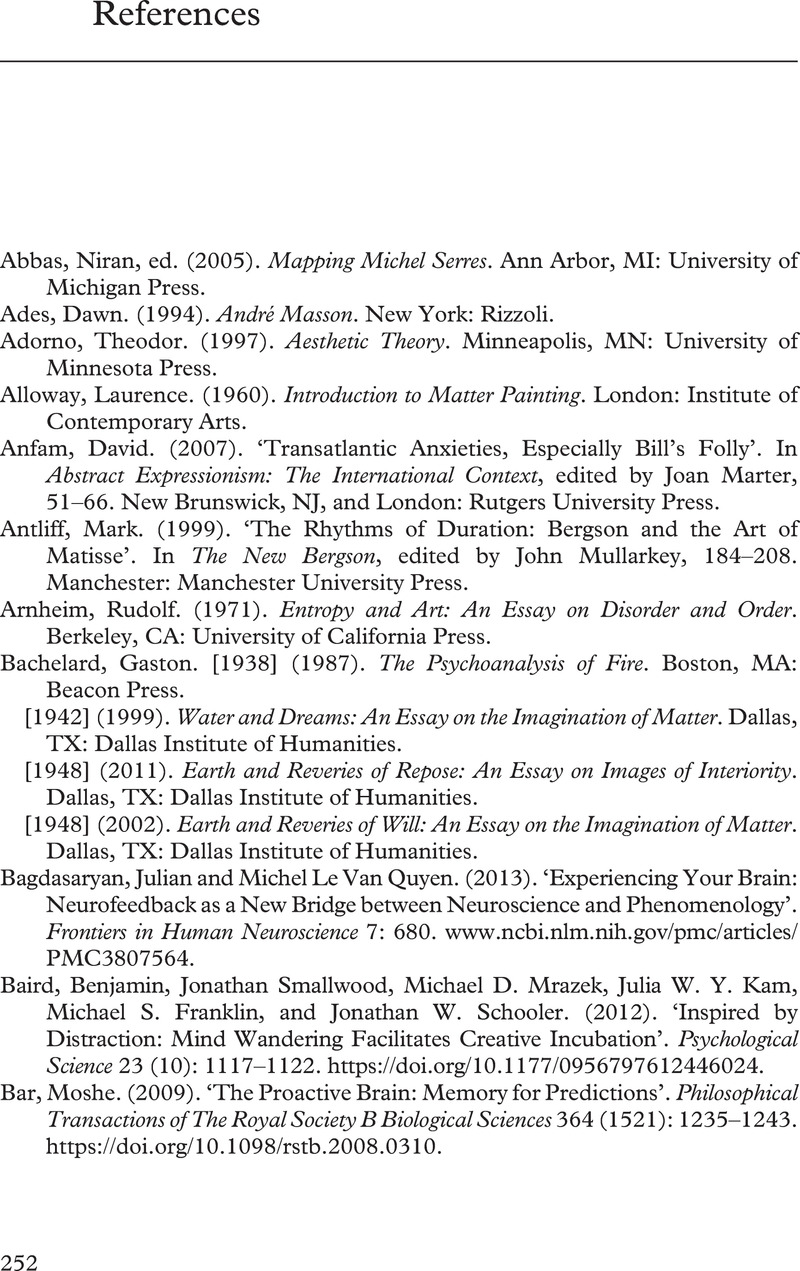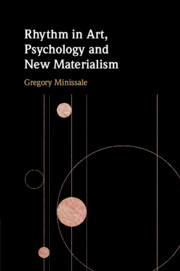Book contents
- Rhythm in Art, Psychology and New Materialism
- Rhythm in Art, Psychology and New Materialism
- Copyright page
- Dedication
- Contents
- Figures
- Acknowledgements
- Introduction: A Rhythmanalysis of Art
- Part I Rhythms of Mind and Matter
- Part II Rhythms of the Brain and Matter Outside of It
- Part III Rhythm, Dirt, Art
- References
- Index
- Plate Section (PDF Only)
- References
References
Published online by Cambridge University Press: 25 February 2021
- Rhythm in Art, Psychology and New Materialism
- Rhythm in Art, Psychology and New Materialism
- Copyright page
- Dedication
- Contents
- Figures
- Acknowledgements
- Introduction: A Rhythmanalysis of Art
- Part I Rhythms of Mind and Matter
- Part II Rhythms of the Brain and Matter Outside of It
- Part III Rhythm, Dirt, Art
- References
- Index
- Plate Section (PDF Only)
- References
Summary

- Type
- Chapter
- Information
- Rhythm in Art, Psychology and New Materialism , pp. 252 - 271Publisher: Cambridge University PressPrint publication year: 2021



